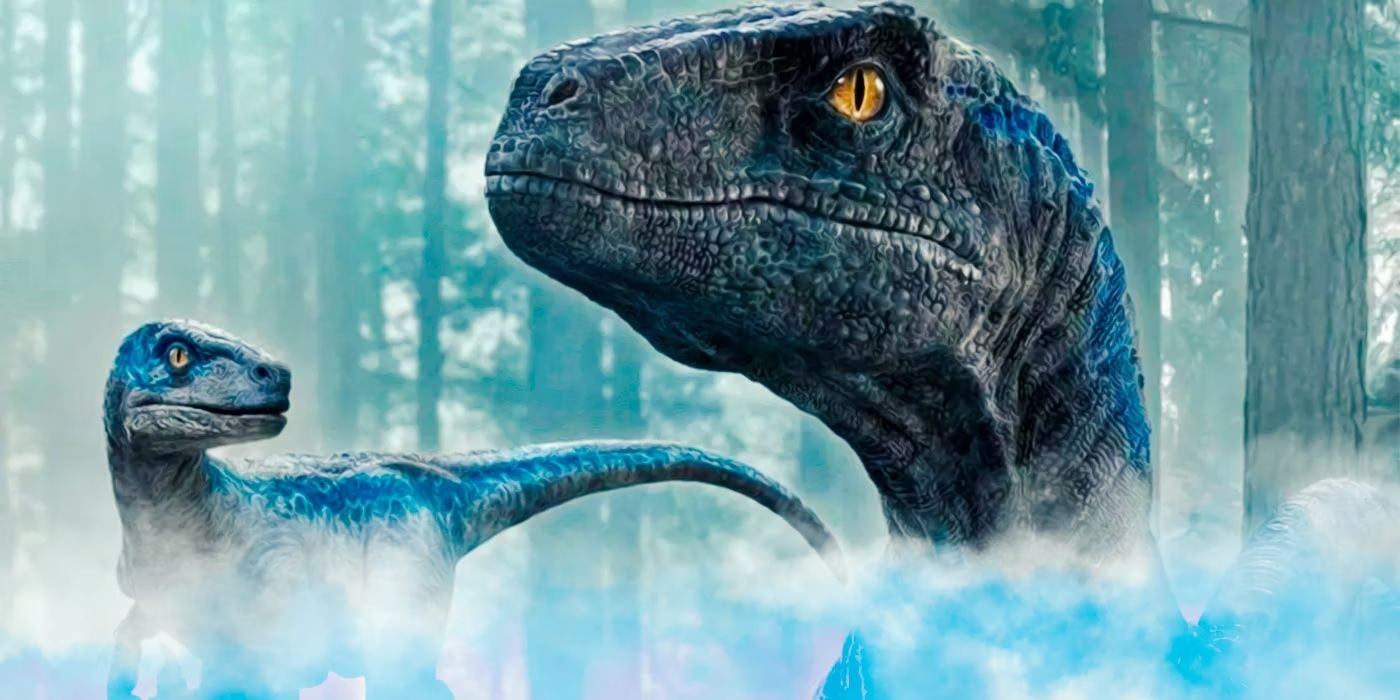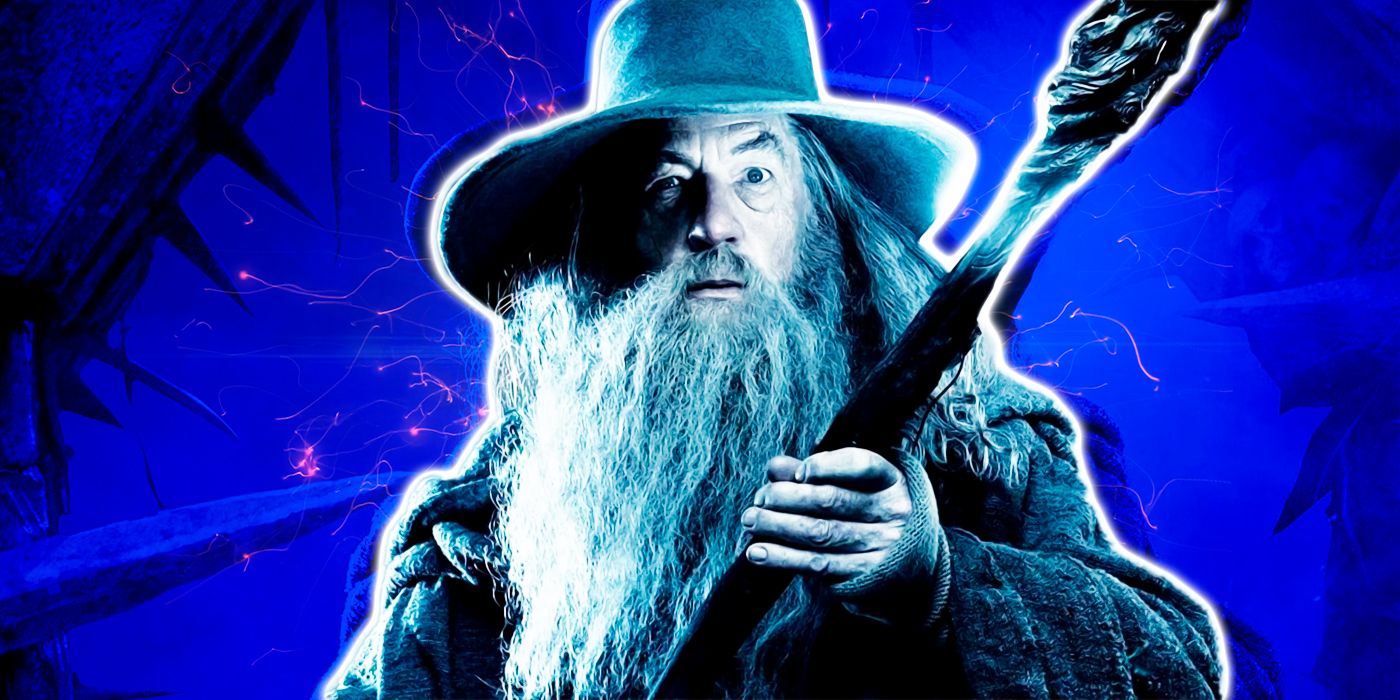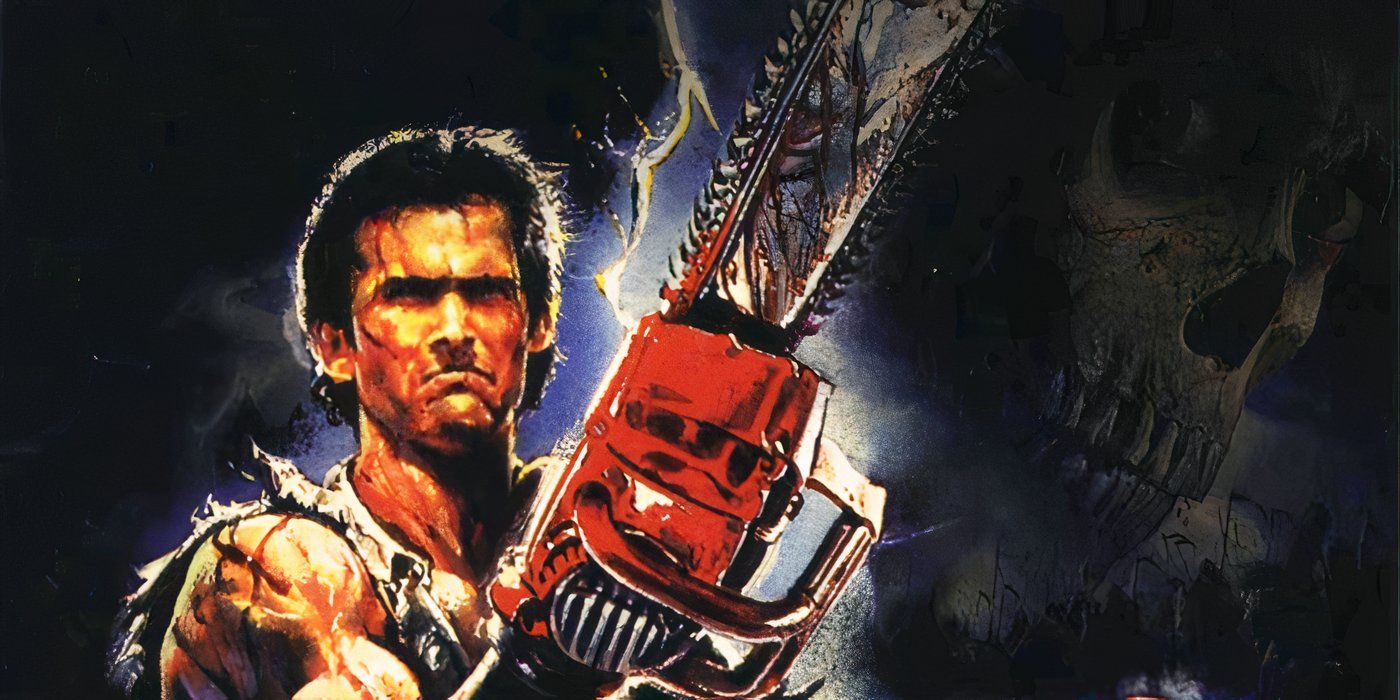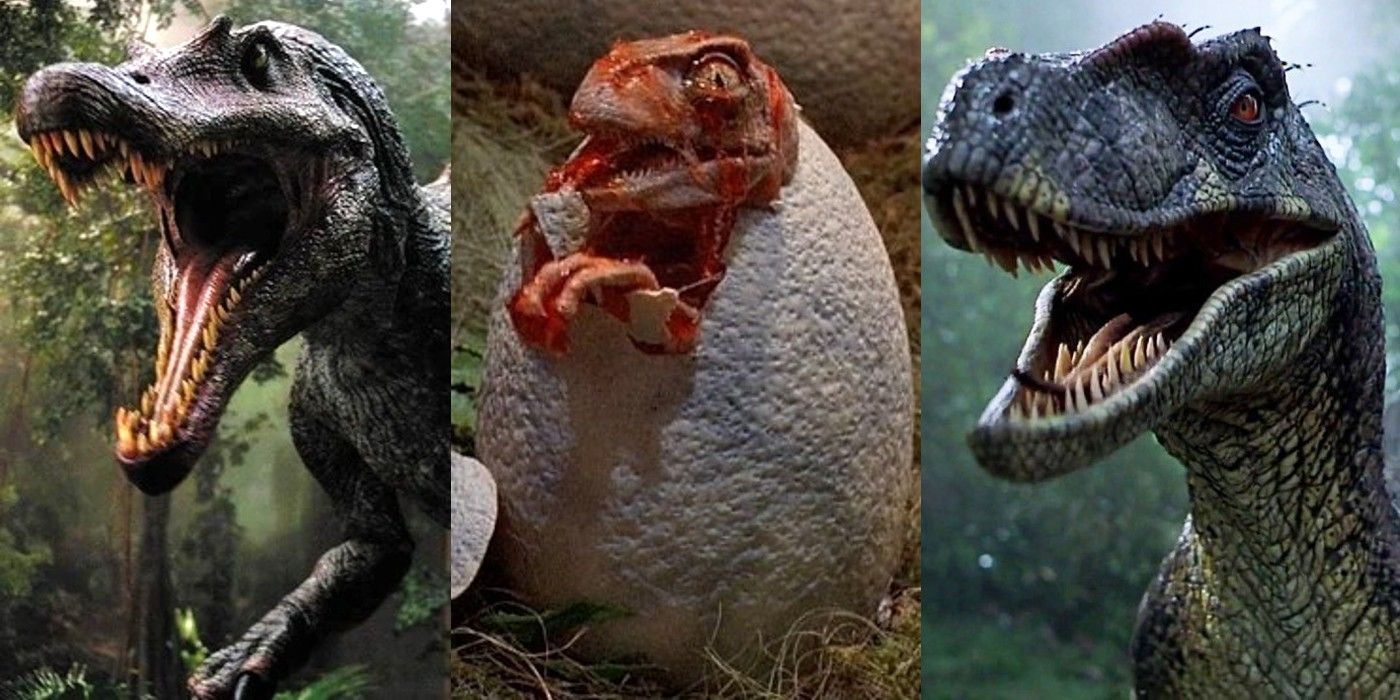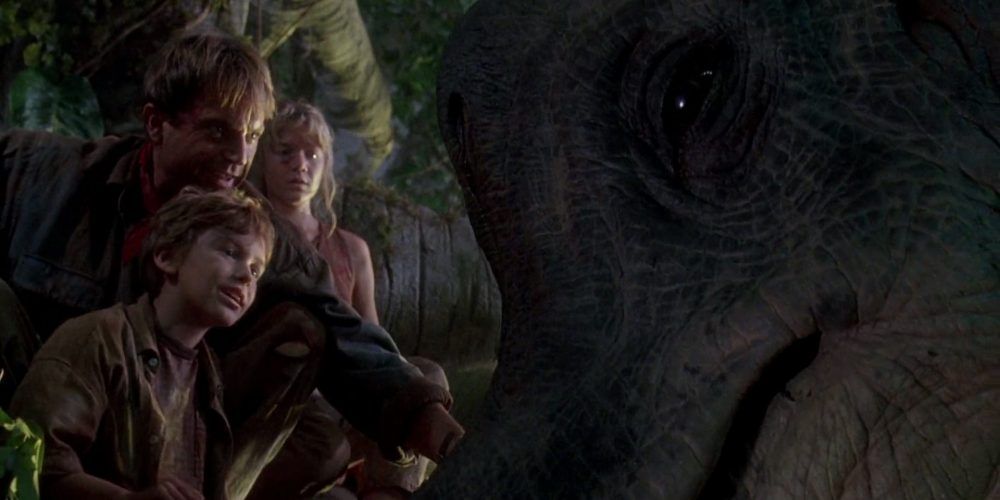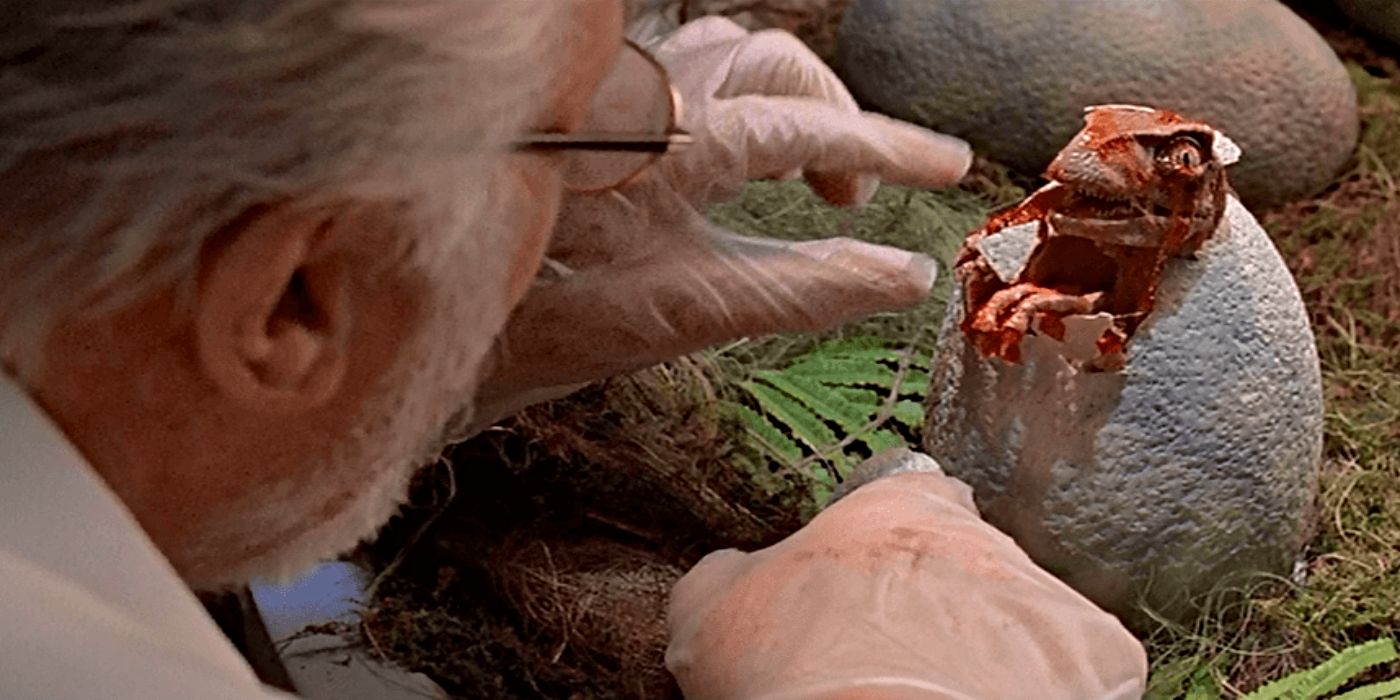The original Jurassic Park movies changed cinema forever by bringing to screen some of the most realistic effects ever produced by Hollywood. Larger-than-life and inhabited by dinosaurs, filmmakers faced challenges to thrill audiences, make their jaws drop, and convince them all that Jurassic Park was a real place. It's ironic when the park's fictional creator, John Hammond, reflects on wanting to show his guests "something real" when, all along, the Jurassic Park series was an intricate cinematic illusion.
Inspired by the Michael Crichton novels of the same name, the original Jurassic Park trilogy told the story of remote islands where cloned dinosaurs ran wild. Starting with Steven Spielberg's Jurassic Park in 1993, the series worked closely with talented professionals like animator Phil Tippet, visual effects studio Industrial Light & Magic, and Hollywood legend Stan Winston. Helping to pioneer digital effects, animatronic work, and sound design, Jurassic Park's impact on the industry was as profound and groundbreaking as that of 1933's King Kong.
10 Jurassic Park: San Diego (The Lost World: Jurassic Park)
In The Lost World: Jurassic Park, Peter Ludlow revealed the grand antecedent to the Isla Nublar resort, Jurassic Park: San Diego. Surrounding a vast amphitheater, Jurassic Park: San Diego formed an imposing edifice, leaving audiences to wonder: "What if…?"
Although the actual site was only seen briefly in the pulse-pounding finale of The Lost World: Jurassic Park as some of its bravest characters race towards it, few would ever guess that the real Jurassic Park: San Diego was a fraction of the size. An elaborate miniature built by Industrial Light & Magic, the staff of Jurassic Park would've probably had a difficult time fitting a Tyrannosaurus Rex family inside of it unless they were impossibly small.
9 The Game Trail (The Lost World: Jurassic Park)
In The Lost World: Jurassic Park, InGen's pursuit along the game trail is an action-packed, heart-wrenching, and at times humorous scene. With an epic scale and rapid pacing, audiences are left in awe as InGen's hunters navigate through dinosaurs, trying to corral them under the sardonic guidance of Roland Tembo.
Filmed across various locations in California, creative stunt driving and filming techniques created the illusion of a larger game trail on Isla Sorna. Additionally, computer-assisted choreography and CGI effectively portrayed the untamed and dangerous nature of Site B's wildlife, underscoring why they couldn't thrive in Ludlow's zoo. This impressive filmmaking feat made the island feel truly alive.
8 The Sneezing Brachiosaurus (Jurassic Park)
After the horrors of Jurassic Park become horrifyingly evident, the film delivers a scene of serenity as Alan Grant, Tim, and Lex interact with a herd of grazing Brachiosaurs. However, as Lex goes out to pet one, the animal comically sneezes on her, covering her in a thick coat of Mesozoic mucus.
While the visually stunning introduction to the Brachiosaurus inspired wonder and gave people a sense of spectacle, the scene with Lex, Tim, and Grant was supposed to reinforce these creatures as live animals. A brilliant display of puppetry and a disgusting concoction made from K-Y Jelly made it feel as if audiences could reach out and touch the dinosaur's nose but made them hesitant to do so.
7 The Baby Velociraptor (Jurassic Park)
In an iconic moment adapted from Michael Crichton's novel, moviegoers watched as a baby Velociraptor cracked its way out of an egg. A testament to InGen's biotechnology and what Jurassic Park's employees accomplished, it posits the question of how something so cute could grow up to be so deadly.
The baby Velociraptor's visuals, particularly compared to "Baby Blue" in the Jurassic World series, are impressive, but it's the foley artists whose audio work stands out. Every sound, from the cracking egg to the oozing fluids, feels authentic and visceral, contributing to a convincing presentation. Sometimes, when immersing an audience in a filmmaker's world, movie magic can manifest in different ways. After all, seeing isn't always believing.
6 The Dilophosaurus (Jurassic Park)
Although making for a fitting end to Jurassic Park's Dennis Nedry, for the rest of the audience, the Dilophosaurus scene is positively horrifying. Framed as a dark comedy, it thankfully leaves a lot to the imagination as the dinosaur's jaws begin to rip into the sinister saboteur.
Regarded as the most improbable and scientifically inaccurate of Michael Crichton's dinosaurs, Jurassic Park's special effects teams encountered a formidable challenge in persuading audiences of this creature's existence. Surprisingly, it wasn't the venom or the creature's colorful frill; subtle details made the Dilophosaurus feel real. From the tilt of its head to the distinct ribs revealed by its heaving chest—these nuances all contributed to the facade that this creature was undeniably alive and ravenously hungry.
5 The Sick Triceratops (Jurassic Park)
After a disappointing tour, Jurassic Park's characters got a close-up look at an ailing Triceratops. It's a touching scene as Alan Grant, Ellie Sattler, and the others become overwhelmed with enthusiasm and empathy for the gentle giant.
Immortalized as a meme that claims director Steven Spielberg cruelly hunted the Triceratops, it wouldn't be surprising if someone believed it. The supposedly sedated dinosaur looks and reacts like a live animal. Closing its eyes and twitching its tongue, audiences can practically feel the herbivore's pain. However, the disgustingly detailed mound of "dino droppings" provides a genuine sense of a veterinary examination and showcases a dedication to authenticity.
4 The Velociraptors (Jurassic Park III)
Three movies in Velociraptors have become a staple of the first Jurassic Park trilogy, and in Jurassic Park III, there was no escaping them. Portrayed as relentless hunters with complex pack dynamics, they'd pave the way for Blue and her pack in the Jurassic World movies.
By the time Jurassic Park III debuted, it was clear that the series had perfected the art of animatronic and CGI effects to bring its dinosaurs to life. Talking dream Velociraptors notwithstanding, these cunning carnivores showcased a new design and complex behaviors. While Jurassic Park enthusiasts seem divided over the third movie, there's no denying that the Velociraptors are among the trilogy's best, conveying creatures as deadly as they are intelligent.
3 The Pterosaurs (Jurassic Park III)
"It's a birdcage" is a line that filled moviegoers with as much dread as it did glee while they journeyed into the haunting atmosphere of Isla Sorna's aviary, where a flock of fearsome pterosaurs took flight. When comparing the Geosternbergia at the end of The Lost World: Jurassic Park to the Pteranodons in Jurassic Park III, there's a noticeable improvement in their portrayal.
Using a combination of CGI and puppetry, it's astonishing to witness how the Pteranodons menacingly navigate both in the air and along the deteriorating catwalks of the aviary. By making the most of the enclosed setting and getting creative with its resident flyers, it's no wonder that "The Birdcage" still stands out as a highlight of the original Jurassic Park trilogy.
2 The Spinosaurus (Jurassic Park III)
Brandishing the logo of Jurassic Park III, the Spinosaurus made a bold entrance in 2001. Stalking prey across land, sea, and air, it commanded fear wherever it went, able to make something as innocuous as a ringtone ominously threatening.
Attempting to dethrone the T-Rex as the king of dinosaurs, Jurassic Park III’s effects specialists had to deliver something III'sr and more fierce. When it came time to unleash the Spinosaurus, they created something that looked as if it were inescapable and the main reason why no place on Isla Sorna was safe. With a seamless blend of practical effects and CGI, the Spinosaurus was an ambitious animal to recreate, and the final product made for the perfect predatory prehistoric nightmare.
1 The Tyrannosaurus Rex (Jurassic Park)
When Jurassic Park’s T-Rex appeared on-screen, it didn’t just shaPark's ground but chilled audiences didn't bone. To this day, T-Rex still headlines Jurassic Park and Jurassic World, after it all began in 1993 with its terrifying breakout role.
Jurassic Park came a long way from its proposed stop-motion animation, and the T-Rex it ultimately produced encapsulates the seemingly impossible task of recreating prehistoric life. Looking into its eyes as they dilated, gazing upwards into its gigantic jaws as they came crashing down, it raised the bar and set a new standard for special effects in sci-fi. If anything needed to convince the audience that these animals were real, it was their tyrant king, and Jurassic Park certainly didn’t disappoint.


